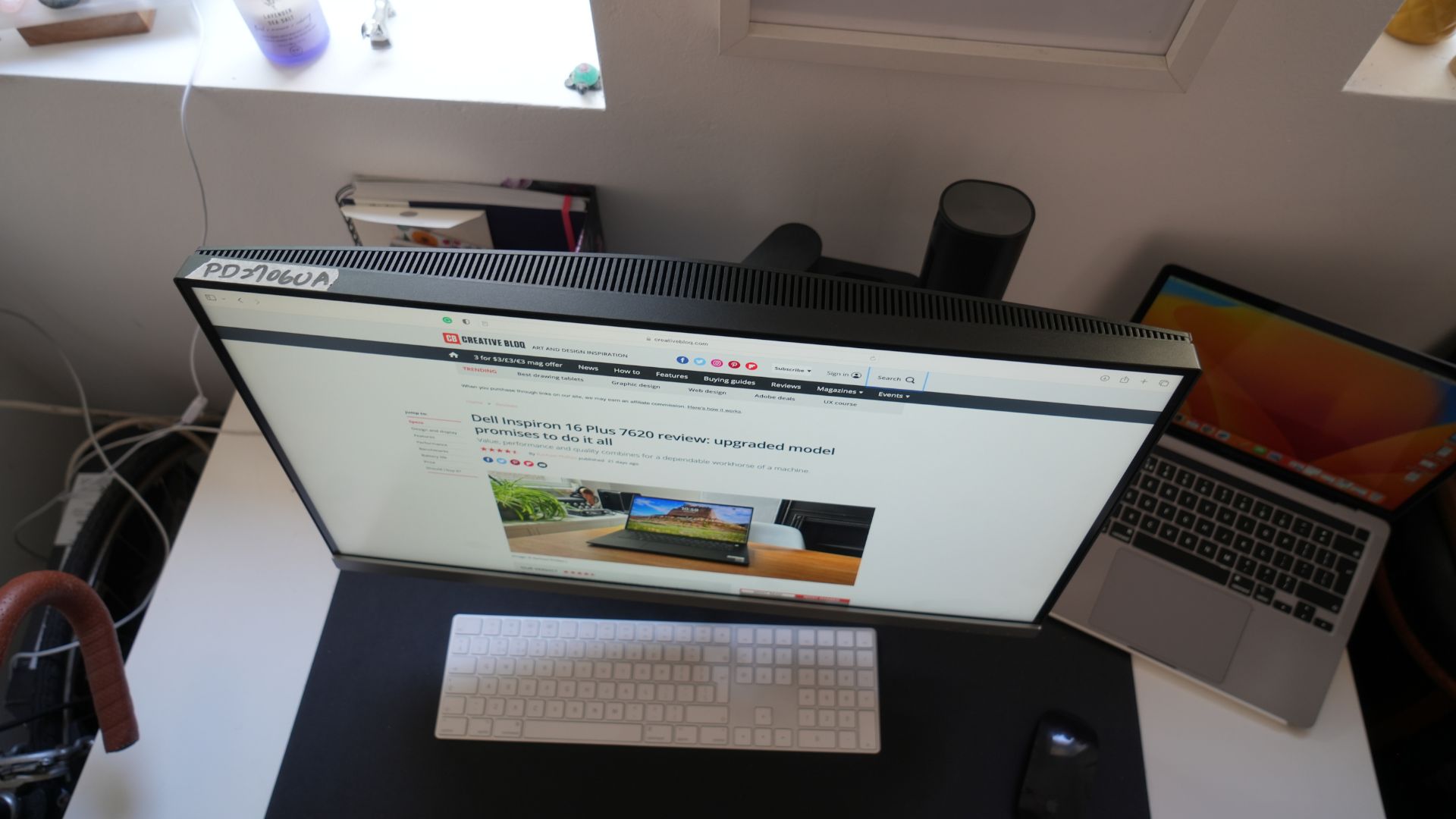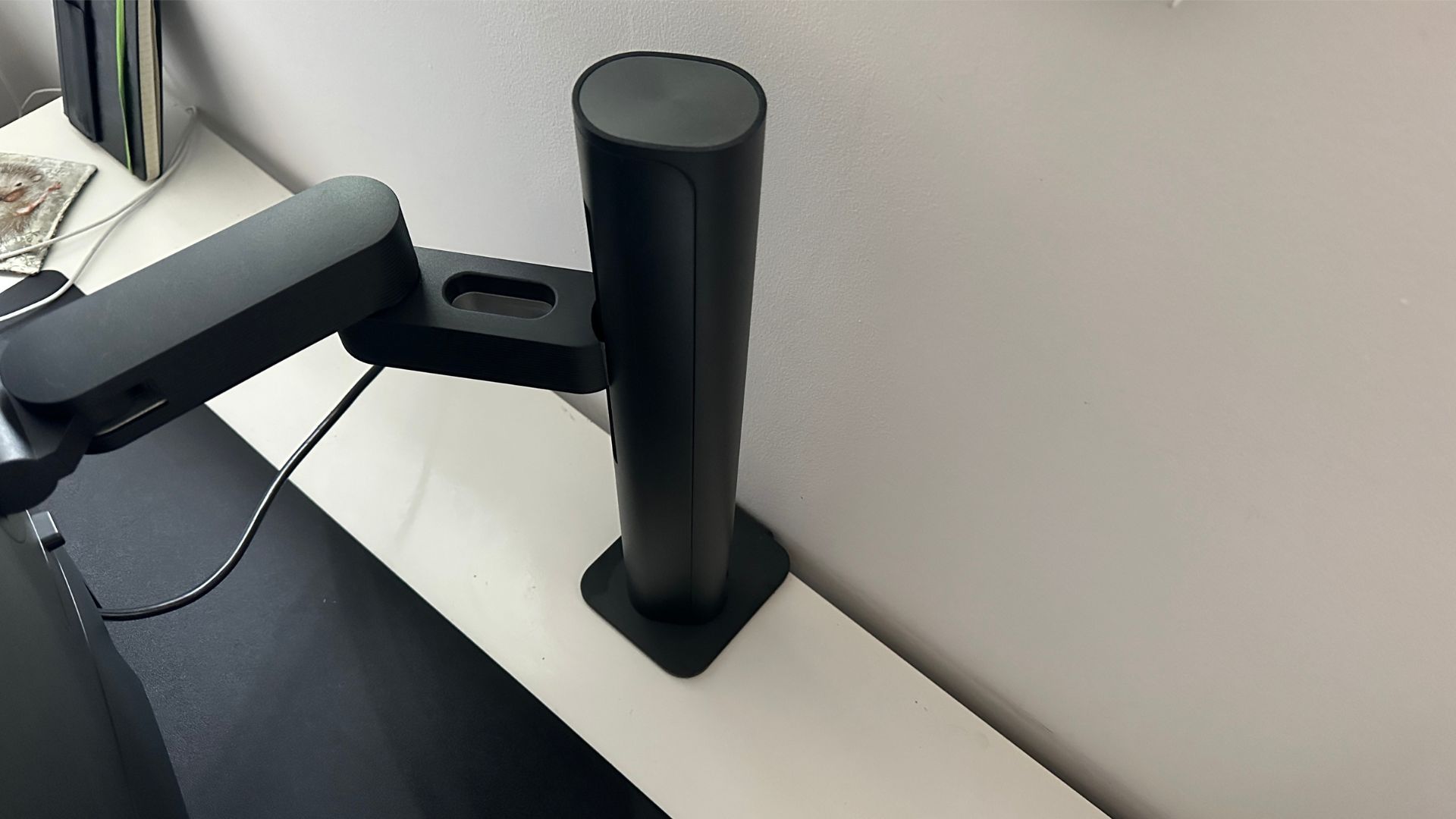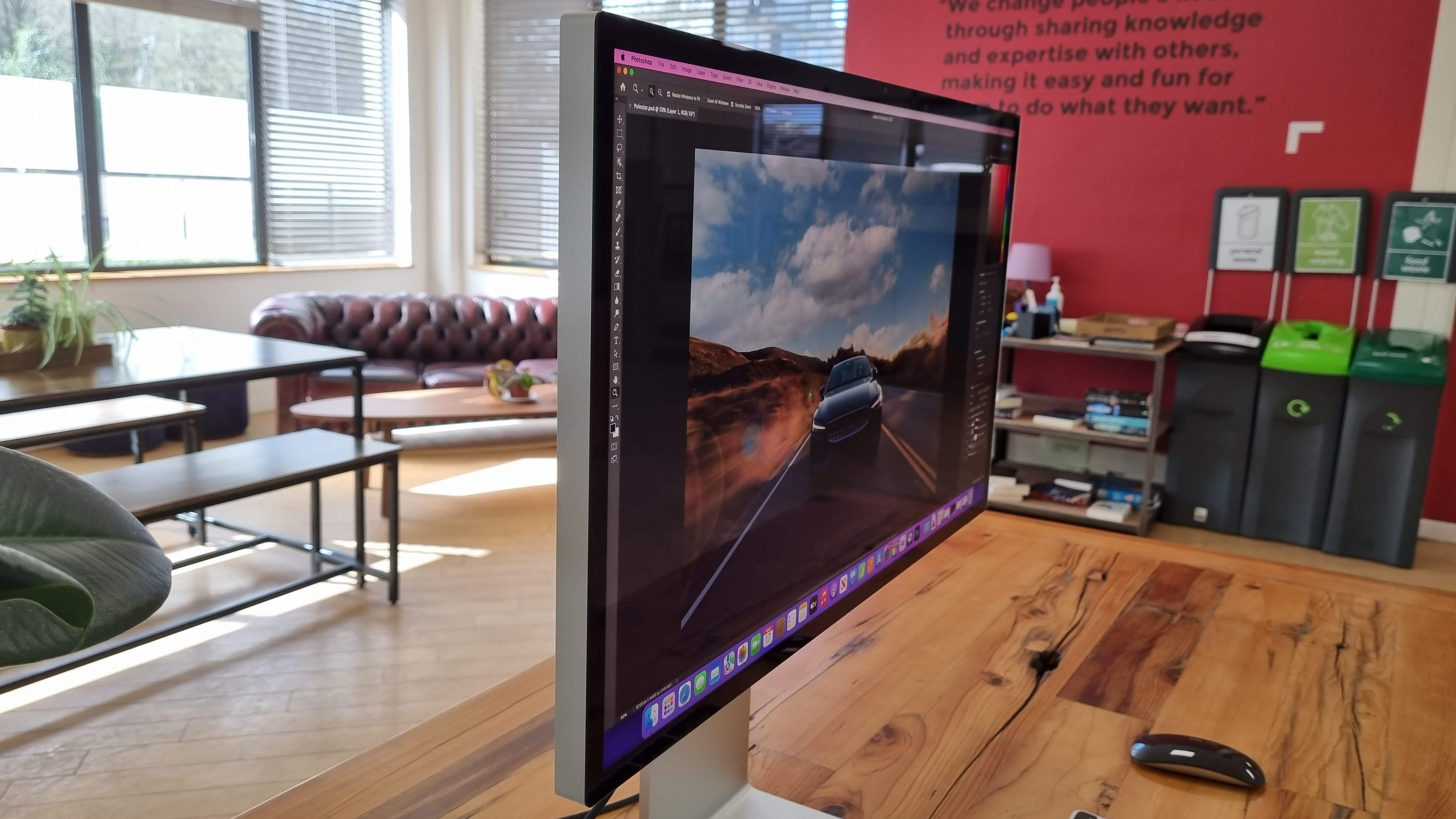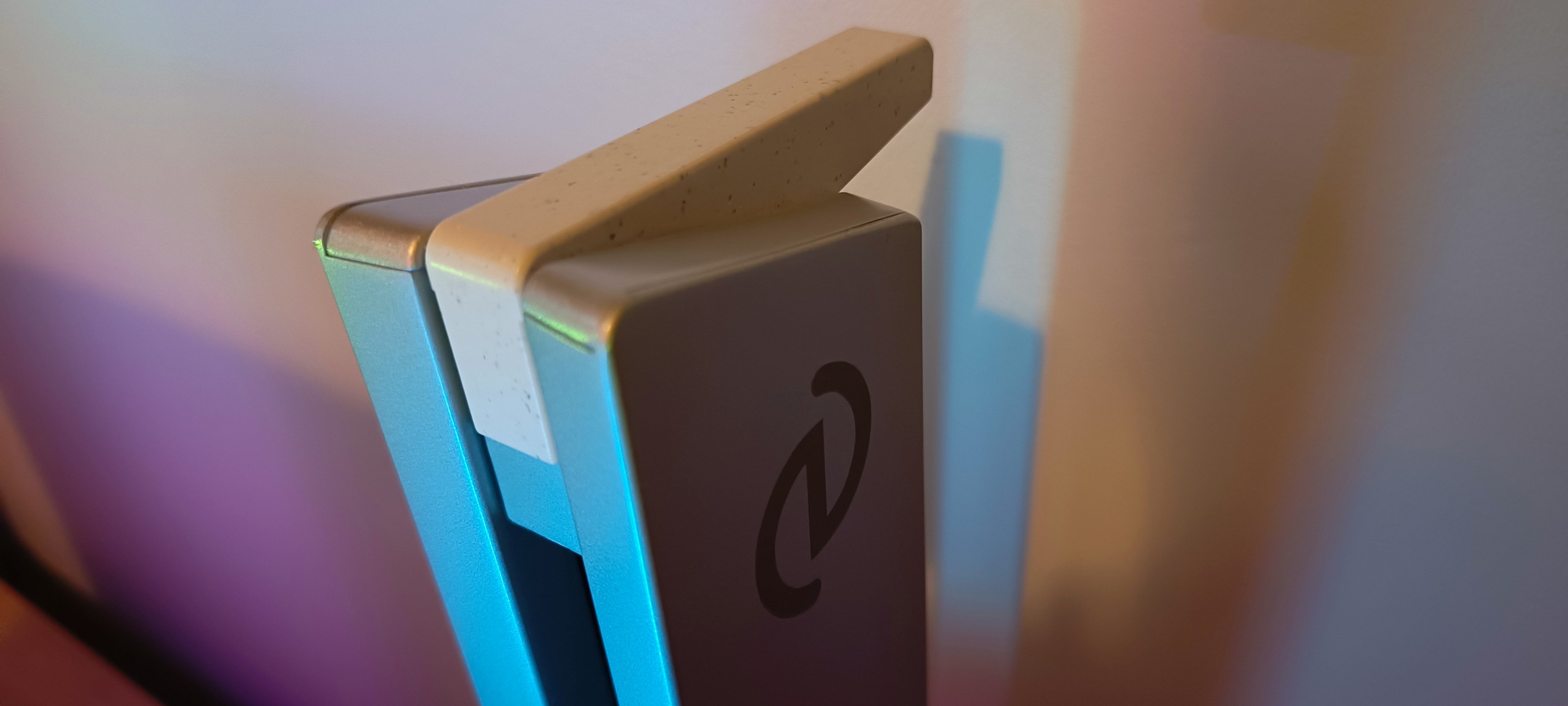The best monitors for photo editing
Get the colour coverage and accuracy you need with the best monitors for photo editing on PC and Mac.

The best monitor for photo editing is a mission-critical purchase for serious photographers and retouchers. To edit photos accurately, you need pitch-perfect colours and plenty of resolution. A poorly calibrated or too-fuzzy monitor simply won't be up to the task.
✅ We are solely focused on what creatives need
✅ Benchmark tests based on real workflows
✅ We consult actual designers and creative pros
✅ Over 50 monitors tested over 10,000 hours in the last two years
At Creative Bloq, we spend a lot of time testing and reviewing, using them in real-world conditions to assess factors like performance, ease of use and value for money. I've drawn up this list by compiling the monitors that have impressed our team the most for their sharpness and accuracy, drawing also on my own extensive experience of using the best photo editing software.
Currently I think your best bet is the BenQ PD2706UA, a 4K monitor offering a superb balance of price and quality; but as you'll see, there are plenty of alternatives. If you'd prefer an all-in-one platform, see our guide to the best laptops for photo editing.
Quick list

We think the balance between price and quality makes this 4K monitor the best choice for most people. It boasts solid colour coverage, 350 nits of brightness and a USB-C port that supports charging.
Read more below

While our first pick is fairly affordable for a pro screen, if you're working on a tighter budget this Iiyama model offers very respectable colour coverage, especially if you only edit images for general digital displays such as for web or social media.
Read more below

It's not cheap, but the BenQ SW321C offers excellent quality. It boasts near-faultless colour coverage, you can quickly switch between colour spaces, and the screen comes expertly calibrated.
Read more below

A lovely, high resolution monitor producing a fabulous image, the Asus ProArt Display PA27JCV is also quite affordably price, cementing it as our pick for the best high-resolution monitor for photo editing.
Read more below

If you're an Apple user and want to stick to the brand, we think the Studio Display is the perfect match for a Mac mini. We liked the 5K screen's clarity, and consistent colour and brightness.
Read more below

For bridging the gap between creative work and gaming, this 34-inch curved ultrawide monitor is an excellent choice. While not all photo editors like curved displays, if you do, this is a high performer.
The best monitors for photo editing in full
Why you can trust Creative Bloq
Best monitor for photo editing overall





Specifications
Reasons to buy
Reasons to avoid
✅ You want professional-grade colour accuracy: Factory calibration and excellent colour space coverage make this ideal for photo editing.
✅ You value ergonomics: The C-clamp design offers unmatched flexibility and desk organisation.
❌ You need ultra-high brightness: While adequate for most uses, the 350 nits brightness might not be sufficient for HDR work.
❌ You're looking for a gaming monitor: The 60Hz refresh rate isn't ideal for serious gaming.
🔎 BenQ PD2706UA is an exceptional monitor for photo editing, offering professional-grade colour accuracy, innovative ergonomics, and solid build quality. ★★★★½
What you need to know: Many of BenQ's monitors are good options for all kinds of visual work, but we think this premium 4K monitor is the best option for photo editing for most people's needs. Costly professional photo editing monitors like the BenQ SW321C and Eizo displays below have better specs, but they represent an unncesssary expense for most people. In our review, we found it offers impressive colour accuracy, a versatile C-clamp design, and excellent Mac compatibility, making it an ideal choice for creative professionals.
Design and build: We loved the ergonomic design of this display with its C-clamp and ergo arm, which saves space on a desk and allows it to be positioned as desired. We also found connectivity needs well catered for with HMDI 2.0, a DisplayPort 1.4, and a USB-C port that can charge a laptop. There's also a USB hub with three USB-A and one USB-C. Cable management is integrated into the C-clamp design, contributing to a cleaner desktop setup.
Display: With 4K resolution and 350 nits of brightness, the 27-inch 4K display is sharp and crisp and bright enough for most people needs in photo editing. Colour coverage is solid, with 95% P3, 99% sRGB and 99% Rec.709, and our test results showed a Dеltа Е score of less than 3, reflecting accurate соlоur rерrоduсtіоn. We particularly appreciated the 11 built-in colour modes and the DualView feature, which allows comparison of work in different colour spaces simultaneously. Mac users will benefit from active colour syncing without additional calibration. The monitor includes BenQ's eye-care technology with ultra-low blue light and flicker-free feature.
Pricing: At £549/$629.99, the BenQ PD2706UA represents excellent value for its feature set and build quality. While not the cheapest 27-inch monitor available, it's still more affordable than higher-res 27-inch rivals like the Asus ProArt Display PA27JCV and the Apple Studio Display, both featured below. In any case, the combination of premium display quality, ergonomic design, and professional features justifies the investment for serious photographers.
Read more: BenQ DesignVue PD2706UA review.
Attributes | Notes | Rating |
|---|---|---|
Design and build | Superior ergonomics | ★★★★★ |
Display | Excellent colour accuracy | ★★★★ |
Pricing | Competitive pricing | ★★★★★ |

"The BenQ DesignVue PD2706US is a seriously impressive monitor. I tested it on a range of creative projects, including photo editing, and came away seriously impressed."
Best cheap monitor for photo editing






Specifications
Reasons to buy
Reasons to avoid
✅ You work across multiple devices: The integrated KVM switch makes it easy to move between desktop and laptop setups.
✅ You need a bright display: With brightness exceeding 400 nits, it's brighter than many competitors.
❌ You need maximum Adobe RGB coverage: 83% won't satisfy the most demanding print professionals.
❌ You have limited desk space: At 9.9kg with a substantial footprint, this is a hefty monitor.
🔎 Iiyama Prolite XUB3293UHSN-B5 offers an impressive blend of professional features and practical functionality at a competitive price point. ★★★★
What you need to know: The Iiyama Prolite may not sound like a brand name you've heard a lot about, as the market has been dominated by the likes of BenQ, ASUS, Dell and other giants. But this 32-inch, 4K IPS screen offers a more affordable pro alternative we can genuinely recommend. That's in part thanks to the integrated KVM switch that allows you to connect and swap between multiple computers (great for photographers on the go), along with a bright and sharp display that stood remarkably well up to our testing.
Design and build: The monitor is notably robust, though it's pretty heavy at 9.9kg. The sturdy stand offers impressive height adjustment, though, eliminating the need for makeshift monitor stands. There's also a 100mm VESA mount for those who prefer monitor arms. The thin bezel design is modern, though the OSD controls on the rear are somewhat fiddly to use. Connectivity is comprehensive, featuring HDMI, DisplayPort, USB-C with 65W power delivery, and USB 3.2 ports thanks to the integrated KVM switch.
Display: The 4K resolution on the 31.5-inch IPS panel provides excellent clarity for detailed photo editing work. In our testing, the monitor exceeded its stated brightness specifications, achieving 403 nits compared to the rated 350 nits – making it notably brighter than many competitors in its class. Colour coverage is solid, with 100% sRGB, 83% Adobe RGB, and 92% DCI-P3. It may not quite cut it in a high-demand photo studio, but if you're starting out or working on a limited budget, the sub-£400 or so this will set you back is more than worth the outlay.
Pricing: At £420-£550, the Iiyama represents good value for a professional 4K display, particularly given its feature set. It undercuts similar IPS panels from premium brands while offering comparable image quality and additional features like the KVM switch.
Read more: Iiyama Prolite XUB3293UHSN-B5 review
Attributes | Notes | Rating |
|---|---|---|
Design and build | Great size and versatile designs and ports. | ★★★★★ |
Display | Solid colour coverage and accuracy. | ★★★★★ |
Pricing | Great value for the specs provided. | ★★★★ |

"If you’re looking for something that can fullscreen Lightroom, but you can’t quite stretch to a 5K screen or a monstrous curved ultrawide, then this package from Iiyama is an attractive proposition."
Best premium monitor for photo editing





Specifications
Reasons to buy
Reasons to avoid
✅ You want pro features at a lower price: Offers professional features at a more accessible price point than many competitors.
✅ You work across different colour spaces: The GamutDuo Mode and multiple colour presets make it ideal for varied workflows.
❌ You need high brightness: The 250 nits maximum brightness may not be sufficient for HDR work.
❌ You have limited space: The 32-inch screen size requires substantial desk space.
🔎 BenQ SW321C delivers professional-grade colour accuracy and features at a more accessible price point than many competitors. ★★★★½
What you need to know: We rate the BenQ SW321C as the best monitor for photo editing for those that have a bigger budget. It's quite a lot more expensive than the BenQ monitor above, but you get a little more colour coverage with 99% Adobe RGB and 100% sRGB (you'll probably know if you're a professional who needs that extra 1%), and you can quickly switch between colour spaces thanks to a separate control unit. The screen comes expertly calibrated and rocks calibration hardware of its own.
Design and build: The monitor features a practical rather than sleek design, with relatively thick bezels and a substantial stand. While the stand offers good adjustability - including 45-degree swivel to each side, -5/+20-degree tilt, and 90-degree pivot for portrait orientation - we noticed some wobble in testing. The included shading hood helps reduce glare, though the anti-glare coating makes this somewhat redundant.
Connectivity is comprehensive, featuring two HDMI 2.0 ports, DisplayPort 1.4, USB-C with 60W power delivery, an SD card reader, and a USB hub. The included Hotkey Puck controller significantly improves the user experience, offering intuitive control over the monitor's settings and quick access to different colour modes.
Display: We've found the colour precision and uniformity across the 4K display to be close to faultless. The 31.5-inch 4K panel delivers outstanding image quality with exceptional colour accuracy. Our tests confirmed BenQ's claimed 99% Adobe RGB, 100% sRGB/Rec.709, and 95% DCI-P3 coverage, with impressive Delta E scores of 0.90 in Adobe RGB mode. The monitor comes pre-calibrated, making it ready for professional use straight out of the box.
We particularly appreciated the professional features, including GamutDuo Mode for side-by-side colour space comparison and multiple colour modes (Adobe RGB, sRGB, DCI-P3, Display P3). While the brightness peaks at 250 nits and contrast didn't quite reach the stated 1,000:1 ratio in our testing, the uniformity tech ensured consistent colour and brightness across the panel.
Pricing: At £1,599/$1,999, the SW321C represents strong value for a professional photography monitor. While not cheap, it offers features and performance that rival monitors costing significantly more, making it an accessible option for serious photographers and content creators.
Read more: BenQ SW321C review
Attributes | Notes | Rating |
|---|---|---|
Design and build | Good connectivity but slightly wobbly stand | ★★★★ |
Display | Exceptional colour accuracy | ★★★★★ |
Pricing | Good value for the features | ★★★★ |

"With wide colour coverage and high colour accuracy out of the box, this pre-calibrated pro-display covers all the vital stuff professional photographers need for editing."
Best 5K monitor for photo editing






Specifications
Reasons to buy
Reasons to avoid
✅ You work in ultra-high-resolution: The 5K resolution gives you plenty of luscious detail to work with.
✅ You want an Apple Studio Display alternative: This is a similar proposition to Apple's own display, but much more affordable.
❌ You want a large working area: While 27 inches isn't small for a display, it isn't huge either, and others on this list greater size.
❌ You're working with standard res content: While the 5K resolution is certainly nice to have, most users don't need it.
🔎 Asus ProArt Display PA27JCV is a functional and affordable 5K monitor, not as stylish or as slick as the Apple Studio Display also featured on this list, but considerably more affordable. ★★★★½
What you need to know: This 27-inch 5K display is our pick for photo editors who need a lot of pixels. That combination of a not-enormous screen size with a fairly enormous pixel count makes for a display with lovely pixel density. This is essentially the same proposition as the Apple Studio Display featured below, but ASUS has craftily priced this monitor much, much lower. So while it's a bit of a boxy affair without that swish Apple feel, it'll provide better value for most editors.
Design and build: Utilitarian without being ugly, the Asus ProArt Display PA27JCV looks like every monitor you've ever seen – nobody's about to mistake it for a hair dryer or a bicycle. It's a flat black box, and that does the job just fine. There are a few things our reviewer did particularly like about the design, including the accessible buttons on the front of the frame (hiding them at the back may look better, but they're more useful where you can see them!) and the highly adjustable stand.
Display: Packing 5K resolution into a smaller display certainly comes with its advantages, but it's also worth discussing the colour accuracy here, which is very good. You get 100% sRGB, 86% Adobe RGB and 97% P3, and you can fine-tune and calibrate that to your heart's content if desired. The 27-inch display size may be on the small side for some photo editors, but I suspect realistically it'll be fine for most. If you know you'll need more real estate for your editing, the BenQ SW321C featured above will fit the bill (as long as you have the desk spacee).
Pricing: As mentioned, this is where ASUS has been rather clever, coming up with a monitor that offers essentially the same proposition as the Apple Studio Display, but for a significantly lower price of around £799 / $799 (though prices can and do vary).
Attributes | Notes | Rating |
|---|---|---|
Design and build | Unspectacular but entirely functional | ★★★★ |
Display | Very good colour accuracy and lush resolution | ★★★★½ |
Pricing | Excellent value for photo editors | ★★★★★ |

"This is an absolutely beautiful screen for photo editing, which is where I would expect the majority of its users to come from."
Best Apple monitor for photo editing






Specifications
Reasons to buy
Reasons to avoid
✅ You're invested in Apple's ecosystem: This works best with Apple devices and offers seamless integration.
✅ You want a 5K display: The high resolution provides exceptional clarity for detailed creative work.
❌ You work with HDR content: The lack of HDR support is a significant limitation.
❌ You use non-Apple devices: Limited port selection and features may not work with non-Apple kit.
🔎 Apple Studio Display offers excellent build quality and seamless integration with Apple devices, though its high price and some notable omissions like HDR support make it harder to recommend universally. ★★★★
What you need to know: If you're an Apple user and want the perfect-looking companion to your MacBook Pro or Mac mini, you may well be tempted to go for Apple's own monitor, the Studio Display. When it comes to editing photos, we found the 5K display to be decent choice. It offers great clarity, and colour and brightness are consistent, which are the main priorities when it comes to photo editing. There's even a built-in webcam, which could come in handy if you have to take video calls with clients.
Design and build: The Studio Display features Apple's characteristic minimalist design in silver aluminium, with clean lines and professional aesthetics. However, we found the standard stand somewhat limiting, offering only tilt adjustment. Height adjustment requires an expensive additional purchase (£400), which we think should have been included at this price point. Port selection is restrictive, with just four USB-C ports (only one for video input), which may require adaptors for non-USB-C devices. The fixed power cable could also present installation challenges.
Display: The 27-inch 5K panel delivers impressive image quality with vivid colours and excellent viewing angles. However, we were disappointed by the lack of HDR support, which is particularly notable given the premium pricing and its positioning as a creative professional's monitor. The 60Hz refresh rate, while adequate for most tasks, also falls behind many competitors. The glossy screen can be quite reflective, though this can be addressed with the optional nano-texture glass (£250 extra). The built-in A13 Bionic chip enables some smart features, including Centre Stage for the webcam, though early webcam performance has been somewhat underwhelming (Apple has promised software fixes).
Pricing: Starting at £1,499, the Studio Display sits firmly in the premium monitor category. The price can increase significantly with additions like the height-adjustable stand (£400) or nano-texture glass (£250), potentially pushing the total cost above £2,000. While build quality and integration with Apple devices is excellent, the pricing may be hard to justify given some key feature omissions.
Read more: Apple Studio Display review
Attributes | Notes | Rating |
|---|---|---|
Design and build | Premium build but limited adjustibility | ★★★★ |
Display | Good quality but no HDR | ★★★★ |
Pricing | Expensive | ★★★ |

"The Studio Display offers a decent level of performance with bright and vivid image quality – but it's only really worth it if you're fully invested in the Apple ecosystem."
Best ultra-wide monitor for photo editing







Specifications
Reasons to buy
Reasons to avoid
✅ You need creative and gaming capabilities: It offers a great combination of colour accuracy and gaming features.
✅ You want OLED quality: The OLED panel delivers exceptional contrast and colour reproduction.
❌ You need full rotation: The stand lacks rotation capability which might affect some workflows.
❌ You require maximum brightness in SDR: The 250 nits might not be sufficient for very bright environments.
🔎 Philips Evnia 34M2C8600 excellently combines creative and gaming capabilities in a premium package, though its capabilities are reflected in a premium price. ★★★½
What you need to know: The Philips Evnia 34M2C8600 is a premium 34-inch ultrawide curved OLED monitor that successfully bridges the gap between creative work and gaming. There are mixed opinions on using curved displays for photo editing, though, so we recommend trying one for yourself before making the leap. The benefit is the space to work since an ultra-wide display is almost like having two smaller monitors together without a bezel breaking up the desktop space.
Design and build: The monitor features a distinctive white and silver aesthetic that sets it apart from typical black monitors. We found the build quality excellent, with a sturdy two-pronged textured white stand offering 150mm height adjustment and 20-degree tilt, though rotation is absent. Connectivity is comprehensive, including USB-C with power delivery, two HDMI 2.0 ports, DisplayPort 1.4, and USB hub functionality. The OSD control button on the back takes some getting used to, but the menu system is functional, plus there's a headphone hook on the stand.
Display: The 34-inch QD OLED panel impressed us with its outstanding performance. We found the 3440 x 1440 resolution sharp and the gentle 1800R curve struck an excellent balance; minimal distortion for creative work while maintaining immersion for gaming and entertainment. Colour coverage was exceptional at 99.3% DCI-P3, and the contrast is outstanding thanks to OLED tech. While SDR brightness is rated at 250 nits, HDR content can reach impressive peaks of 1,000 nits in small areas. The 175Hz refresh rate (via DisplayPort/USB-C) and 0.03ms response time are great for gaming.
Pricing: At £899, while certainly premium-priced, we think it offers good value considering its OLED technology, exceptional colour accuracy, and gaming capabilities. Recent price reductions from its launch price of £1,299 have made it more competitive.
Read more: Philips Evnia 34M2C8600 review
Attributes | Notes | Rating |
|---|---|---|
Design and build | Premium design, good adjustability | ★★★★ |
Display | Exceptional OLED performance | ★★★★★ |
Pricing | Premium | ★★★★ |

"I had this monitor on my desk for several weeks, doing day-to-day work, performing creative tasks and indulging in several gaming sessions after hours. It flew through pretty much every challenge I set it."
How to choose the best monitor for photo editing
There are several things to consider and look out for when you're choosing a monitor for photo editing. One of the most important is to decide what size monitor you want. A larger monitor means that you can see your work at a larger size, and it can also make it easier to see all of your work if you have lots of layers or to navigate multiple windows, which is handy if you're jumping between Photoshop and Lightroom, for example. However, a larger screen takes up more space, so you'll need to decide on the sweet spot for you (we normally recommend between 27 inches and 32 inches.
One of the most important factors in a monitor for photo editing is colour coverage and accuracy. There are no minimum requirements that you should look for in terms of resolution and colour accuracy, and we'll discuss colour spaces more below. If you're editing images for digital use, you will probably be using the sRGB colour space, so the higher the percentage of colour coverage in this space the better. There are other colour spaces for video and print.
How we tested the best monitors for photo editing
We have chosen the best monitors for photo editing based on our writers' experiences when carrying out our own hands-on tests and reviews. We spend dozens of hours testing each monitor in a real-life setting, including at work writing reviews and guides like this, to see how they are to live with outside raw benchmark testing. All our monitor reviewers have extensive experience with display technology and all have and use professional colorimeters to test the screens with.
When reviewing monitors, we conduct a series of benchmark tests to check brightness and contrast levels, colour coverage, accuracy and uniformity. While many manufacturers state specs in some or all of these areas, those are guidelines and our test results sometimes vary.
We also use the monitors over several days in real-life use cases, including for photo editing in Lightroom and Photoshop. As well as the quality of the display itself, we also evaluate build, ergonomics, connectivity and price. We then seek to identify the best monitor for different needs and budgets.
FAQs
Why do I need one of the best monitors for photo editing?
Screens vary in their brightness, uniformity and level of colour coverage and accuracy, which means images can look different on different displays. If the screen you work on has poor colour coverage and accuracy, your work could look very different on a different screen or when printed out.
The best monitors for photographers can help ensure your photos look the way you expect when they appear on another device or in print. Good colour coverage is especially important if you're doing HSL adjustments and colour grading. Editing on an inadequate screen, or even a good screen that's not been calibrated, can result in images that can be over or undersaturated.
The best monitors for photography support wide colour spaces such as Adobe RGB and provide accurate colours and uniform brightness and contrast. While you can't guarantee what screen your clients or public will use to see your photos, you can at least ensure that your own screen is allowing you to make the most accurate edit possible.
Which is better for photo editing: IPS or OLED monitors?
The monitors that we've listed above mainly include two types of display: OLED (organic light-emitting diodes) and IPS (in-plane switching). These use slightly different tech, each with its own strengths and weaknesses.
OLED screen pros:
- Each pixel lights up independently, which allows for perfect blacks and high contrast.
- No need for backlighting, resulting in thinner and lighter screens.
- More energy-efficient when displaying darker images.
OLED screen cons:
- Often more expensive than IPS
- Can be vulnerable to 'burn-in', where a permanent artifact is left on the screen if a static image remains there for too long
IPS screen pros:
- Excellent colour accuracy and consistency across wide viewing angles.
- More durable than OLED displays, with less risk of burn-in.
- Often brighter than OLED screens, making them easier to view in bright environments.
- Typically more affordable than OLED screens.
IPS screen cons:
- Backlighting can result in lower contrast compared to OLED.
- Tend to consume more power than OLED screens.
What size monitor should I use for photo editing?
Generally, most photographers like editing on a monitor that's between 27in and 32in. Ultra-wide monitors will give you a lot more screen space to work on so that you can have multiple windows or panels open, but they aren't necessarily the best for focused work.
What monitor resolution do I need for photo editing?
I would recommend going for a resolution of 4K (3,840 x 2,160) if you can afford it. Most of the screens in our list are 4K displays, but a QHD or FHD screen may also suffice and be more affordable – just check it still offers the good colour coverage you want for photo editing.
Do I need a 4K monitor for photo editing?
Not at all. We recommend using a 4K screen since it will offer a sharper, cleaner and more detailed image if the screen is large enough, and since 4K monitors have become more affordable, it's not so much of a difficult decision. But if you prefer a smaller screen (less than 27 inches), then you're not going to see much of a difference between 4K and FHD, and the interface scaling may make things too small to be comfortable.
What else should I consider in a monitor for photo editing?
Colour is vital and it's a good idea to look for a that display supports colour spaces like Adobe sRGB. You'll also want a uniform brightness across the screen. Connectivity is a key issue, too – many monitors have HDMI, but some also support Thunderbolt or USB-C meaning you can have a single cable going to your PC or Mac that powers it and also carries the display signal.
Elsewhere, you might want to think about basics for monitors, does it have a webcam? How many ports does it have? See our best monitor with built-in webcam if that's important to you.
What colour coverage do I need for photo editing?
As a general rule, we'd advise choosing a monitor for photo editing that covers at least 90% of sRGB and 70% of Adobe RGB. These colour spaces are industry standards. Professionals, especially those working on projects that go to print or involve working with other photo editors will want higher than this – ideally over 90% of Adobe RGB.
Daily design news, reviews, how-tos and more, as picked by the editors.

Beren cut his teeth as Staff Writer on the digital art magazine ImagineFX 13 years ago, and has since worked on and edited several creative titles. As Ecom Editor on Creative Bloq, when he's not reviewing the latest audiophile headphones or evaluating the best designed ergonomic office chairs, he’s testing laptops, TVs and monitors, all so he can find the best deals on the best tech for Creative Bloq’s creative professional audience.
- Joe FoleyFreelance journalist and editor
